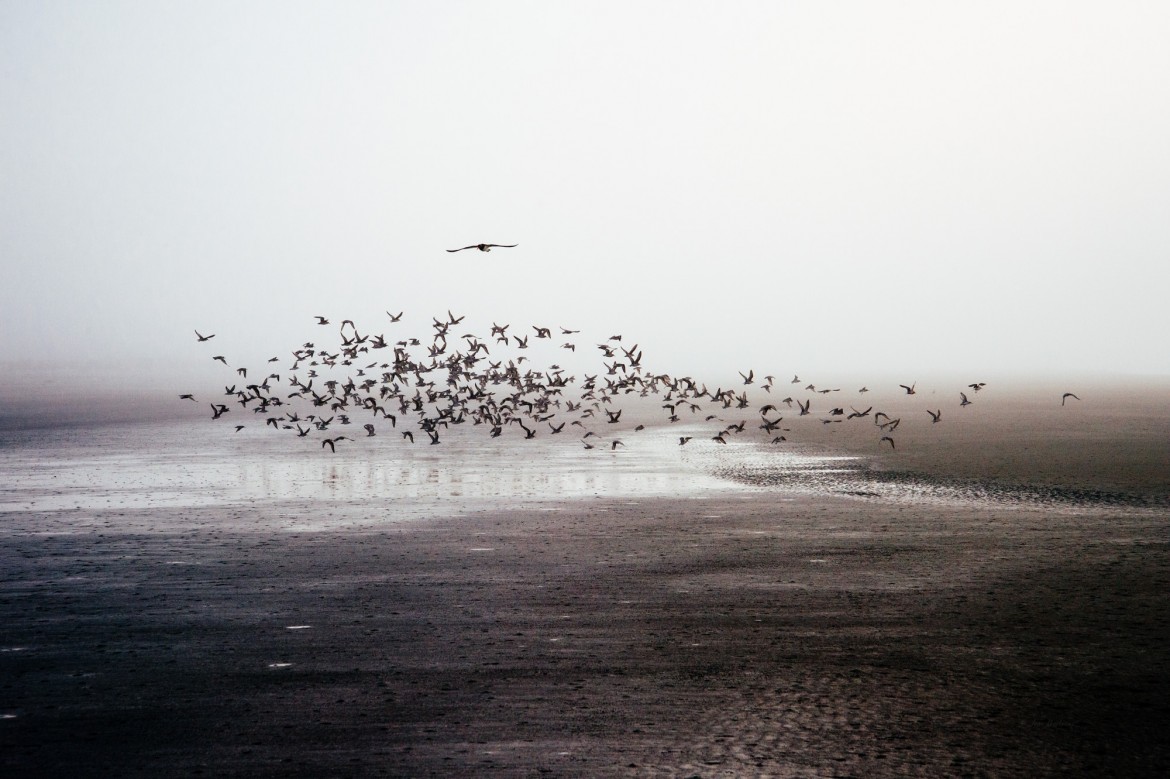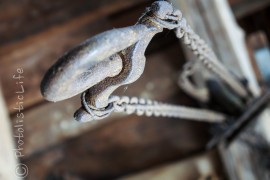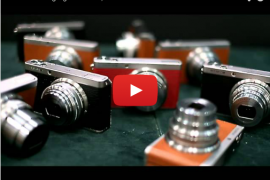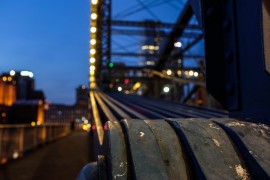Come rain or shine, right? Right? Maybe, but I’d be willing to bet that the majority of folks out there hang up their camera if the sky becomes gray or the fog rolls in. Unbeknownst to them the changing weather is what creates original and eye-catching photography.
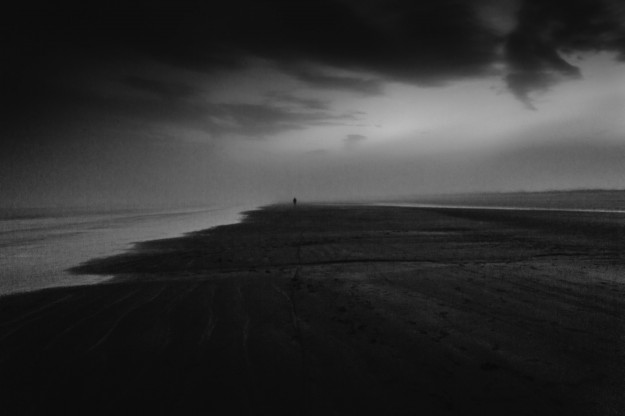 The sun had set, the fog rolled in, and everyone went home. This is when I was able to find some of the best shots, shots that would stand out.
The sun had set, the fog rolled in, and everyone went home. This is when I was able to find some of the best shots, shots that would stand out.
You’ll need to know how to take advantage of your cameras advanced manual settings if you want to capture high quality images. If you still aren’t sure how to use your camera in manual mode you’ll want to read this guide to using your camera in manual mode. It helps if you are familiar with your surrounding so you don’t walk into traffic or off of a cliff in the fog.
Here are some guidelines to remember before we get started:
- Use a tripod – bad weather usually means poor lighting
- Don’t Change Your Lens – Fog can moisten the inside of your camera, dirt and debris can blow into the body and onto your cameras sensor if you remove the lens outdoors in bad weather. If you must, find someplace out of the elements to do it.
- Increase your ISO – be mindful of your shutter speed, even if you are using a tripod objects blowing (like leafs, branches, small children) will looked blurred if your shutter speed is too slow.
- Watch Your Shutter Speed – make sure your shutter speed is fast enough to keep camera shake from impacting the sharpness of your image. A general rule to follow is keep your shutter speed faster than the numerical value of your lenses focal length (45mm lens = 1/50 sec shutter speed).
- Check the Weather – Be sure you aren’t going to get caught in a violent storm or torrential down-poor with your expensive gear.
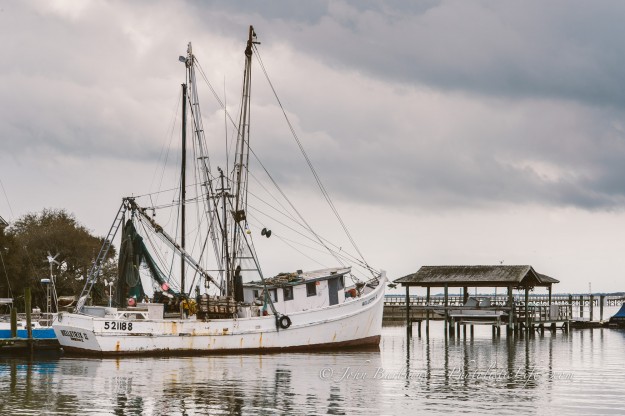 You may not always see the definition in the clouds overhead so use a graduated neutral density filter or circular polarizing filter to pull out the detail.
You may not always see the definition in the clouds overhead so use a graduated neutral density filter or circular polarizing filter to pull out the detail.
Great! Now that you are prepared for poor weather photography lets discuss some techniques to make the most of it. It’s important to remember that composition is the single most important factor in photography. Without proper composition you may as well toss your camera into the lake and call it a day. Poor weather presents us with a few composition builders you need to be aware of.
Elimination of Distractions
When the clouds roll in and the light dims you’ll notice less harsh light glaring off shiny objects. Fog will erase unsightly houses and colors. The combination of all this will act as a natural light diffuser, creating some great soft light for photography.
The two images at the top of this article would not have worked had the fog not been there. First, who wants to see another flock of birds on the beach? I sure don’t. But throw in some ominous fog and a few reflections and you’ve created a mysterious mood. Second, there are houses that would have been in the image had it not been for the fog, this would have distracted viewers from the main subjects.
Leading Lines
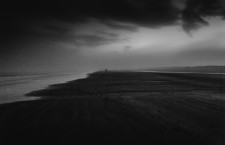 Leading lines are always useful. You could use shadows, reflections, or the coast line (among other things) to draw your viewers eyes to your subject. The shadow figure in the fog towards the top of this article would not have caught your interest had there not been lines on both sides of him/her. Without the leading lines the person would be lucky to be spotted on the horizon and you’d most likely move on to another photograph.
Leading lines are always useful. You could use shadows, reflections, or the coast line (among other things) to draw your viewers eyes to your subject. The shadow figure in the fog towards the top of this article would not have caught your interest had there not been lines on both sides of him/her. Without the leading lines the person would be lucky to be spotted on the horizon and you’d most likely move on to another photograph.
Minimalism
Things like fog, ominous clouds, and rain tend to keep people indoors. This creates a unique opportunity for you to capture images void of the hordes of tourists that would normally be scattered as far as the eye can see.
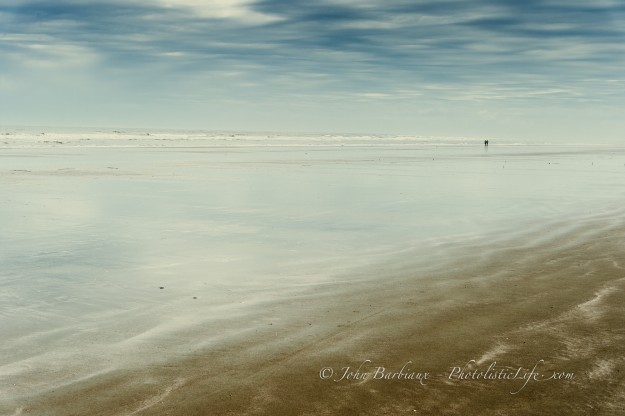 ISO 100, 50mm, f/7.1, 1/320 sec.
ISO 100, 50mm, f/7.1, 1/320 sec.
This is a perfect time for those of you who are still a little bashful when photographing strangers, there won’t be a ton of people around watching you watch them watching you.
Inclement Weather Gear
Many times, photographing in less than perfect weather tests a photographers resolve as well as endurance. If you dress properly and take along proper gear you’ll be able to stay out and photograph longer. Things like wearing gloves in the winter (I like mittens that allow you to roll back the finger cover, exposing your digits, to make fine adjustments to your camera) or a waterproof jacket in the rain.
If you plan on wearing a waterproof jacket then you may want to consider buying one for your camera too… Some of the higher end cameras made today claim to be weather resistant but whatever that means I don’t want to find out.
If you are using a tripod make sure it’s a sturdy tripod because there is a good chance that the wind is blowing if the weather is less than perfect. Also, make sure you remove your cameras strap or wrap it tightly around your tripod as the wind will blow it and the movement will shake your camera.
If you’re going to use a rain cover on your camera you may want to cover the lens with a protective UV filter. Using a UV filter will degrade your images slightly so use it sparingly. Personally, I’d have to be in some extreme weather before I’d consider using one… Why spend lots of money on a nice lens only to hamper its ability to give you the best it’s capable of?
Finally, use your noggin. If there is violent lightening all around stay inside or at least under the cover of a parking garage or similar building (anything but a tall tree). Dress appropriately, it’s easier to peel layers than add to them. If you’re venturing off the beaten path then be sure to let someone know where you’ll be and when you expect to return in the off-chance you’re swept up in a tornado and find yourself singing and dancing with a tin man, man shaped lion, and a sack of talking straw…

